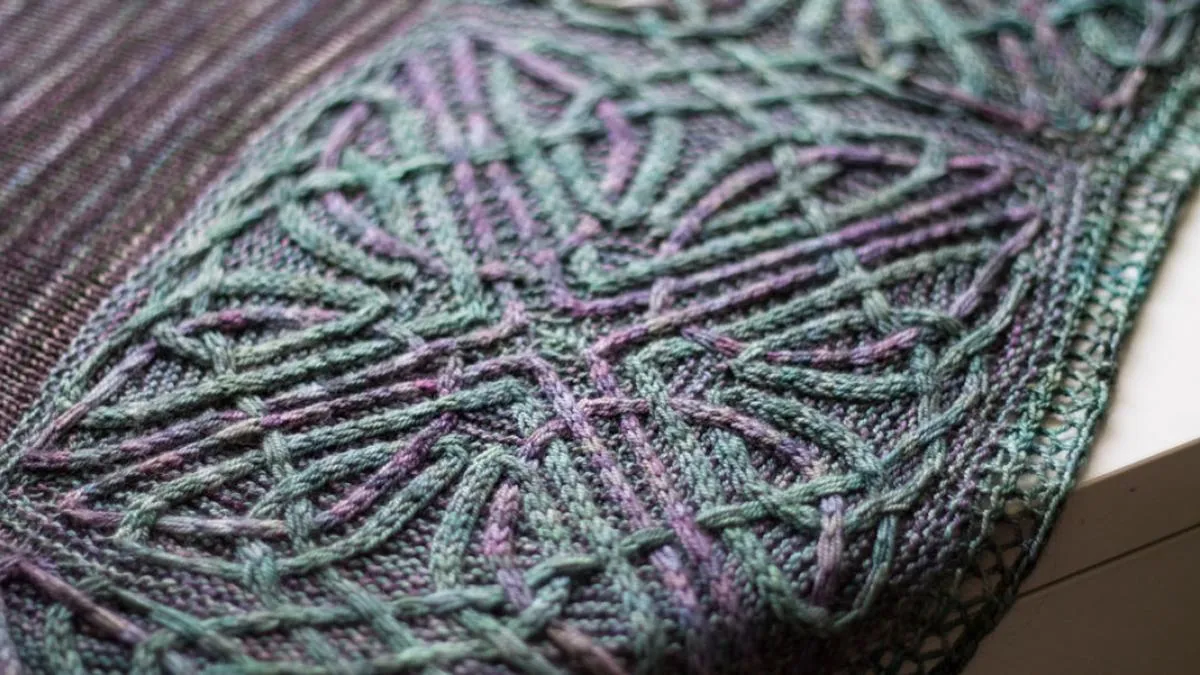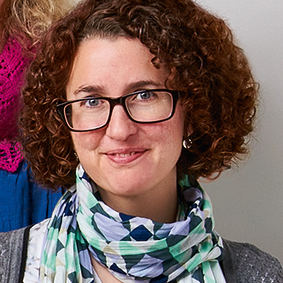My inspiration: interview with Lucy Hague
Glorious cables inspired by Celtic artwork decorate Lucy Hague's intricate knitwear. We took the opportunity to ask her all about her design process.
Who inspired you to take up knitting?
"I was always very interested in arts and crafts when I was a child, and my mother taught me to knit when I was very young (so young that I don't remember learning how to knit). I used to knit lots of clothes for my dolls. I lost interest for a while, but when I moved to Edinburgh to attend university, I got interested in designing and making my own clothes, and along with sewing I became interested in knitting again."
Do you have a favourite artist, writer, poet or musician who inspires you?
"MC Escher is one of my favourite artists; he was a Dutch artist and print-maker who had an incredibly mathematical imagination. He developed an obsession with certain types of repeating geometric patterns, and is known for using very clever tricks of perspective in his art.
"I also love the work of the Scottish artist George Bain, who wrote an instruction manual on how to devise and draw new patterns in the Celtic art style. This book was published in the mid-twentieth century and it is credited with reviving interest in Celtic art, and giving artists the understanding and methodology to create new art in this style."
Which knitwear designer has most inspired you, and why?
"I would have to say Alice Starmore because, whilst I've never worked from any of her knitting patterns, I didn't realise that it was possible to knit Celtic-style cables until I saw her work, and that set me off on the journey of figuring out how to design my own Celtic-inspired knitting patterns."
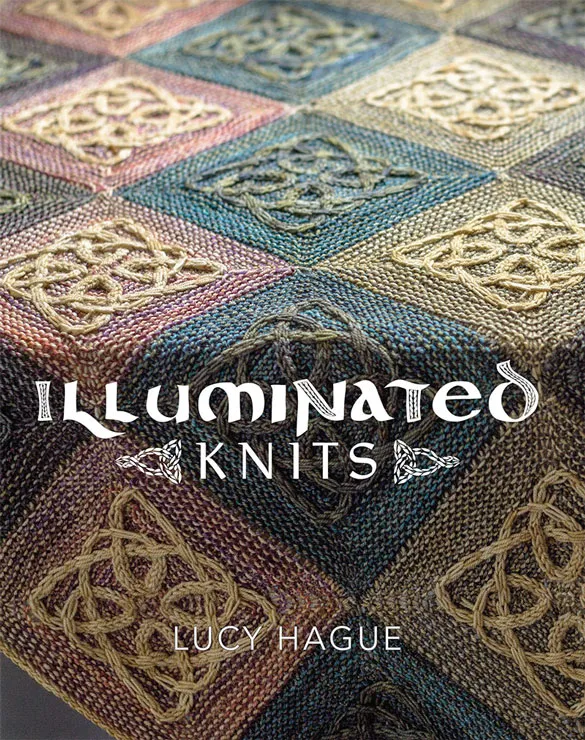
Tell us about the colours, landscapes or architecture that inspire your design work.
"I thought about colours a lot whilst working on my second book 'Illuminated Knits'. All of the designs in this book use a slipped-stitch colour technique that creates contrasting cables with two different colours. I chose colours that were close in tone to the colours used in the illuminated manuscripts that inspired the designs, and I exclusively used yarns from Malabrigo in this book (I love the inky, saturated effect of their hand-dyed shades).
"Whilst I talk a bit about colour theory and planning in the book, in practice I tend to go by intuition when choosing shades, and then swatch in a few different configurations to see which combinations turn out the best.
"I suppose I'm mainly known for my designs inspired by Celtic art, but in addition to this I also draw a lot of inspiration from architecture – particularly early medieval and Gothic church architecture, and the Art Nouveau style (which has influenced a design I'm currently working on)."
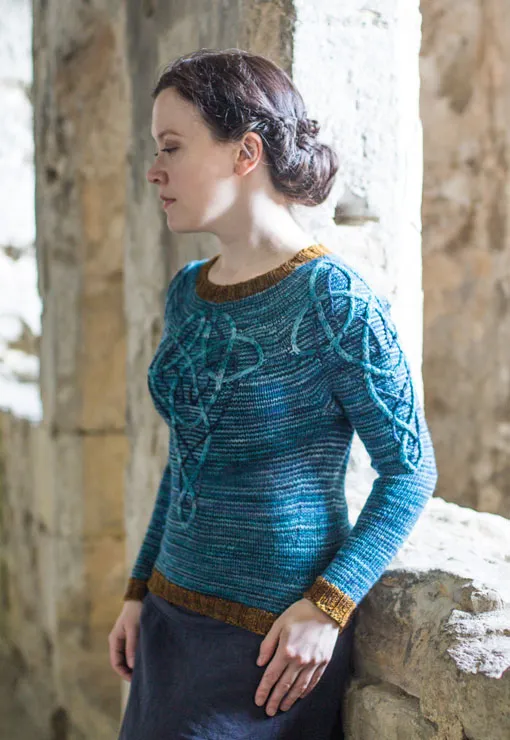
What fibres do you love to work with?
"I love most natural fibres, particularly wool. I've recently fallen in love with yak for its softness and sheen. The main thing I always look for in a yarn is good stitch definition, to show off detailed cable-work – so I tend to gravitate to yarn with high twist, and I usually avoid single-plied yarn or anything too fuzzy (although I will happily use those sorts of yarn for lace and plain knitting)."
What is your favourite knitting book of all time?
"That's tough to answer! I don't actually have that many knitting books, partly because I sadly have very little time to knit anything other than my own designs, and also because there is such a great wealth of reference information available on the internet these days. One book that I do turn to often, for help with garment design, is Maggie Righetti's 'Sweater Design in Plain English'. It has a lot of helpful information on different types of sweater construction."
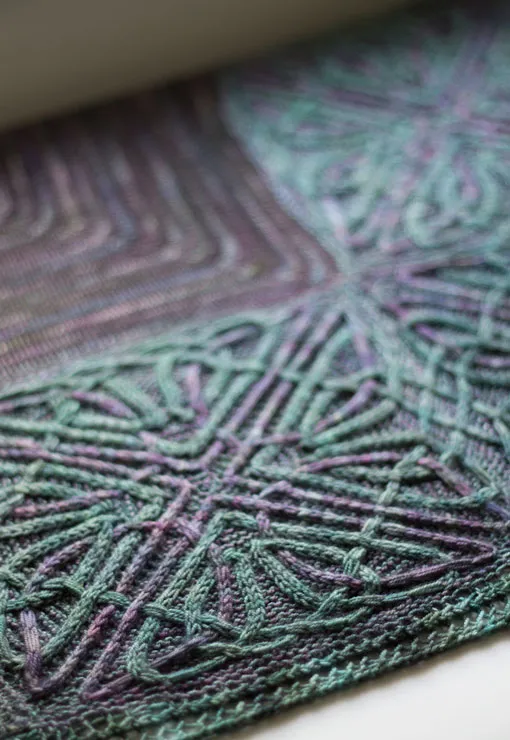
Which design from your portfolio are you most proud of, or is most special to you?
"I'm very proud of my shawl design 'Durrow'. It took a very long time to design the cable pattern that flows across the border, and I had to solve a number of quite difficult construction-related problems in order to figure out if the design was even possible to make the way that I had envisioned it. Ultimately I was able to match the initial vision that I'd had in my mind, and I'm very happy with how it turned out, and how the colours work together. It is definitely the most complex design I've ever created, both in terms of the cable knitting and the construction of the shawl."
Are there any techniques or styles of knitting you'd like to explore further?
"I'm interested in going back to designing more lace, as this was my initial area of interest before I really got into cable knitting. I love very complex lace (like the vintage designs of Herbert Niebling and Marianne Kinzel, and the contemporary designer Rosemary Hill), and I would like to find ways to combine this with complex cables. I recently came up with a technique to create truly reversible travelling cables, and I'm sure there are all sorts of interesting ways that this could be mixed with reversible lace knitting patterns to create some very intriguing and innovative designs."
See more of Lucy's designs on her website: www.lucyhague.co.uk
